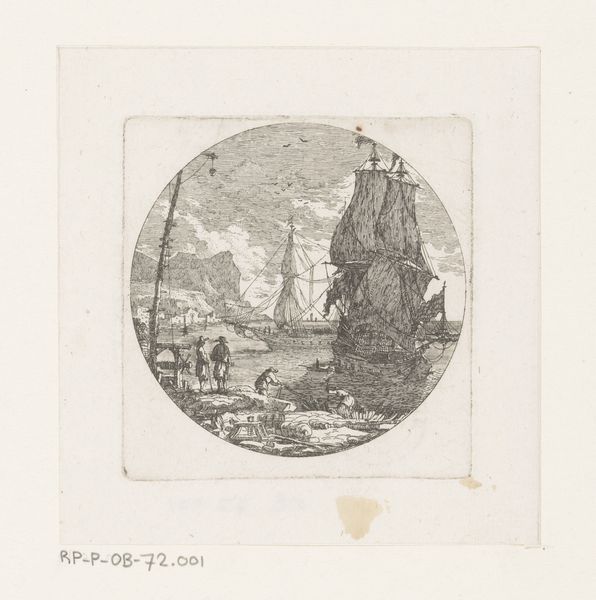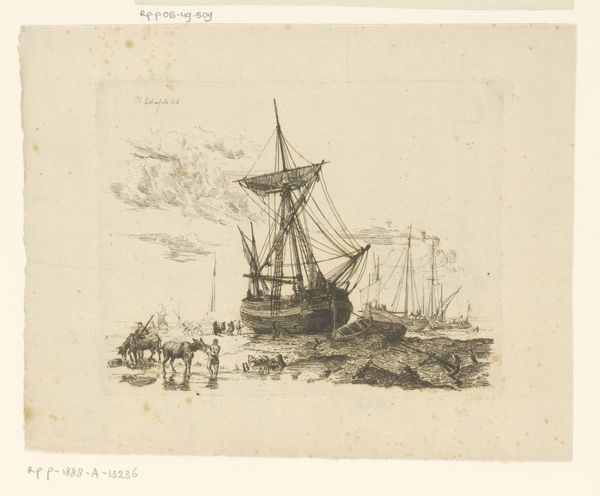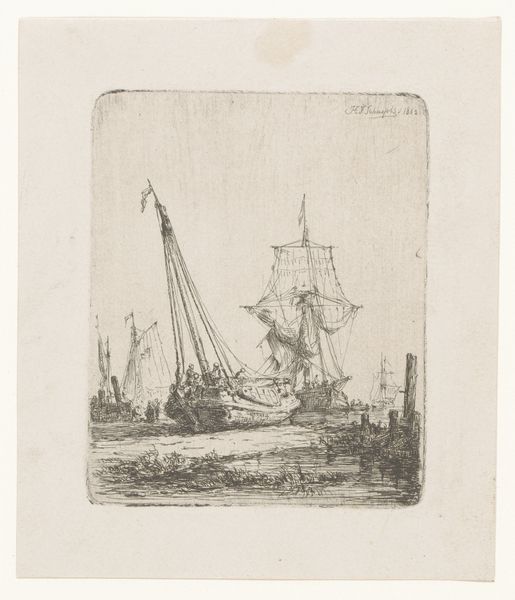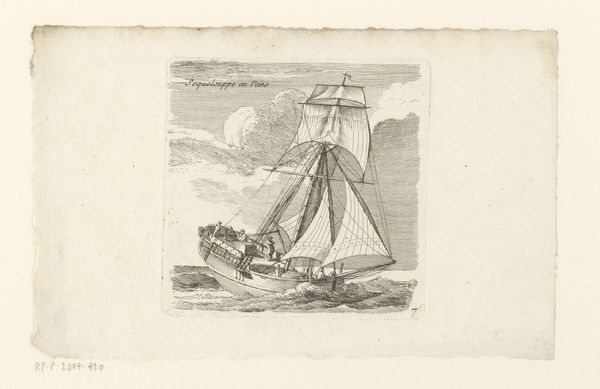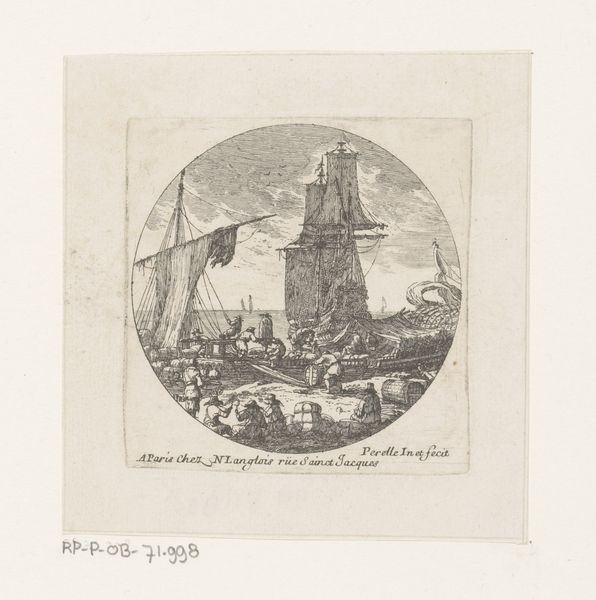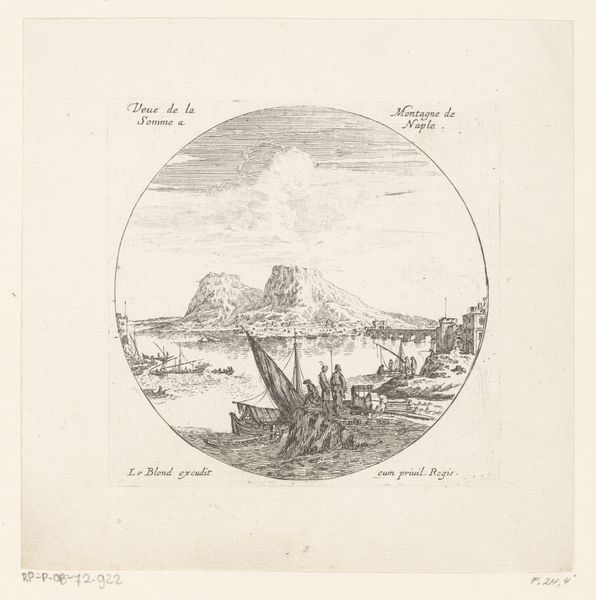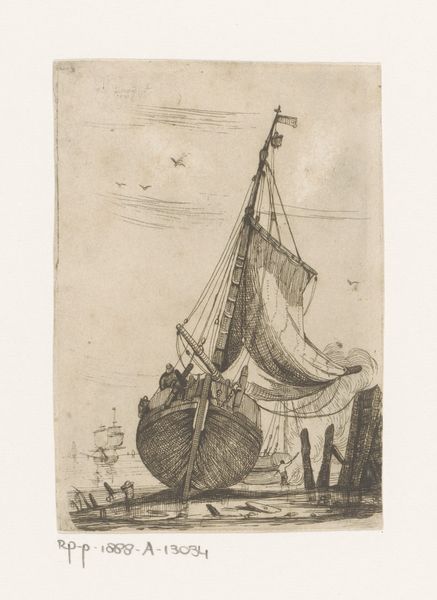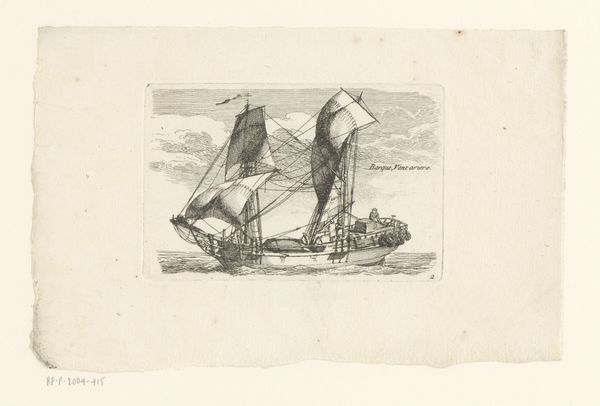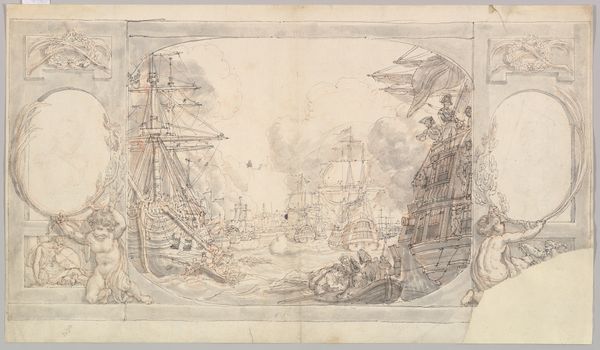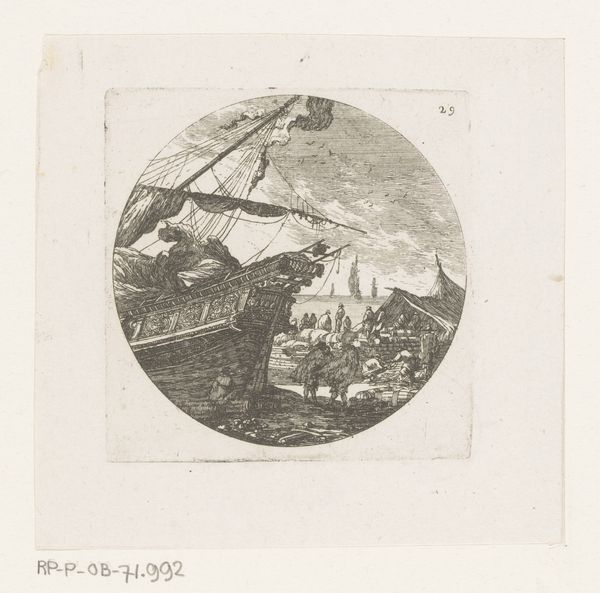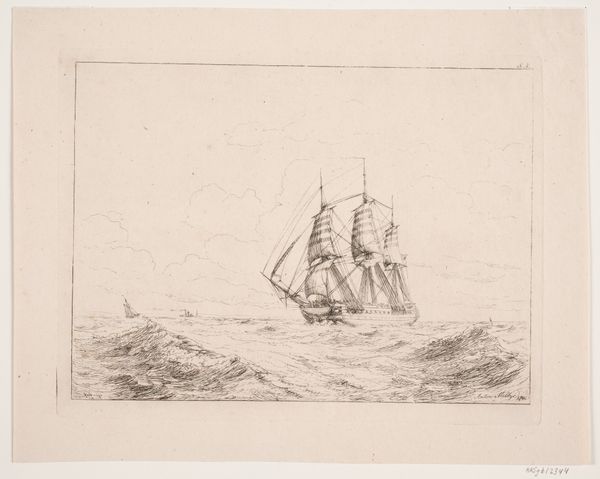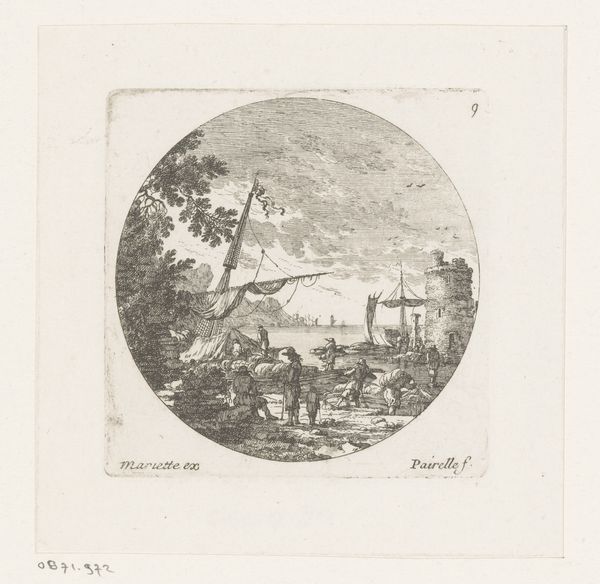
drawing, print, etching, ink, engraving
#
drawing
#
ink painting
# print
#
etching
#
landscape
#
etching
#
ink
#
engraving
Dimensions: 119 mm (None) (plademaal)
Editor: Here we have an 18th-century etching titled "Et orlogsskib i fart," author unknown, currently at the SMK. It shows a sailing warship cutting through choppy waves. It has such an interesting composition, contained within a circle. What strikes you when you look at this piece? Curator: Immediately, I'm drawn to the visual rhetoric of power. Consider the 18th century context: naval power was integral to colonial expansion, trade routes, and the assertion of national identities. This ship isn't just a vessel; it’s a symbol of dominance, an extension of patriarchal authority projected onto the global stage. Who did this dominance affect? Editor: That makes me think about the people who would have been on these ships – often men from marginalized communities, pressed into service. Curator: Exactly. And beyond that, think about the colonial projects that these ships enabled, the impact on indigenous populations, and the exploitative trade practices they facilitated. It makes you consider if this neat, circular frame is a way to make all of that feel more palatable. Editor: That's a pretty grim perspective… I mean, it *is* a cool-looking ship, though. The etching is so detailed. Curator: True, the artistry is undeniable, but we must also engage critically with the narratives it silently upholds. Even an anonymous piece can perpetuate the status quo. It's like a beautifully crafted propaganda poster, urging allegiance. Editor: I see your point. So, even seemingly innocuous art can have these embedded political dimensions? Curator: Precisely. Analyzing art requires us to constantly question whose stories are being told, and whose are being erased. What appears like a straightforward depiction might reveal intricate systems of power. Editor: This has given me a lot to think about. It's so easy to see only the surface, but now I see it’s vital to consider art in its historical and social context. Curator: Agreed, and by interrogating images like these, we arm ourselves with knowledge and encourage a more just view of history.
Comments
No comments
Be the first to comment and join the conversation on the ultimate creative platform.
